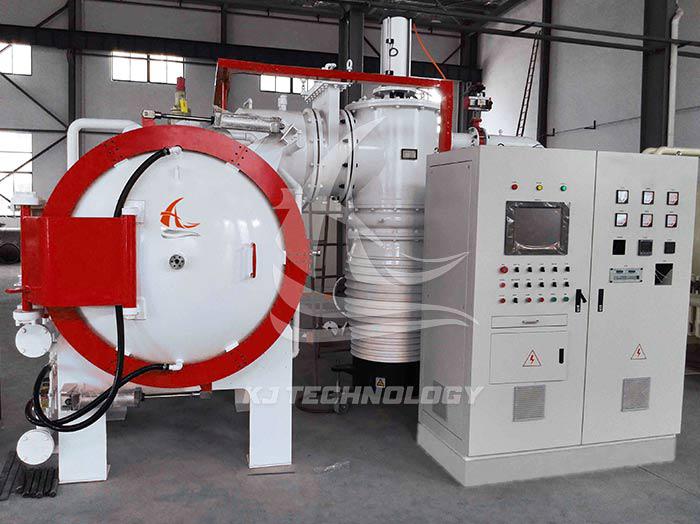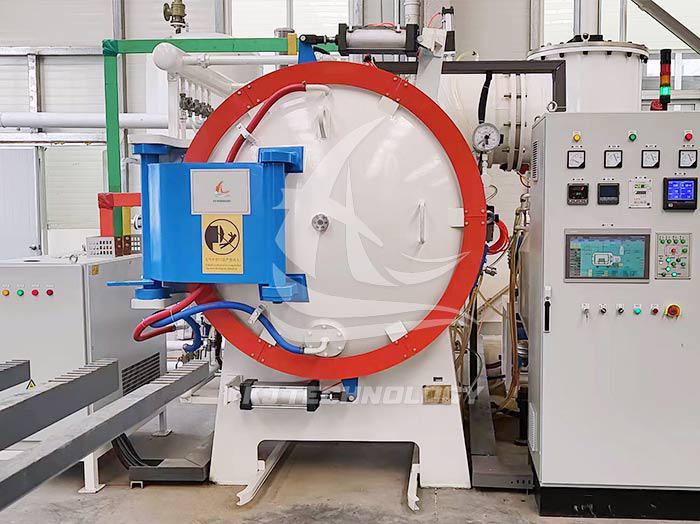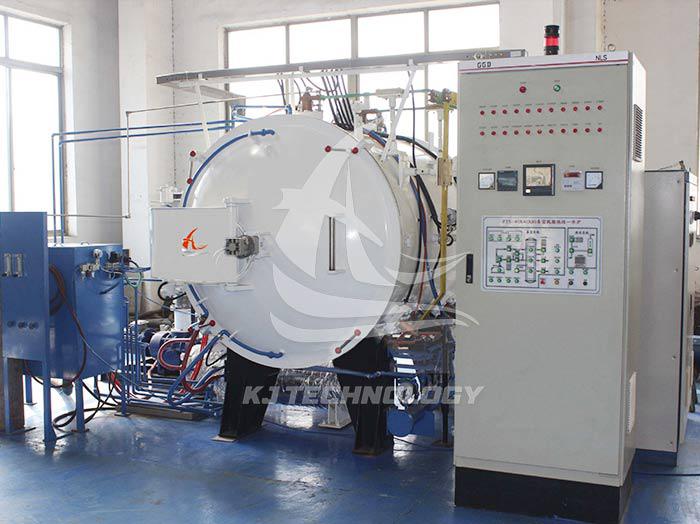How to choose a customized vacuum furnace for ceramic sintering?
 08-28-2025 Author: KJ technology
08-28-2025 Author: KJ technology
When choosing a customized ceramic sintering vacuum furnace, a comprehensive evaluation should be conducted from seven core dimensions: temperature range, vacuum system, heating and insulation, furnace structure, control system, auxiliary functions, safety, and after-sales service. The specific details are as follows:
1. Temperature range: Match material sintering requirements
Key parameters: maximum temperature, temperature control accuracy, temperature uniformity.
Maximum temperature: It needs to cover 0.7-0.9 times the melting point of the material. For example, for silicon carbide (melting point 2730 ℃), equipment with a furnace temperature above 2200 ℃ needs to be selected; Aluminum oxide (melting point 2072 ℃) requires a furnace temperature of around 1800 ℃.
Temperature control accuracy: Transparent ceramics or functional ceramics require high-precision temperature control of ± 1 ℃; Structural ceramics can meet the demand at ± 5 ℃.
Temperature uniformity: achieved through multi-layer insulation screens and a stepped heating program, with typical values ranging from ± 5 ℃ to ± 10 ℃.
2. Vacuum system: ensuring material purity and performance
Key parameters: ultimate vacuum degree, vacuum pumping time, pressure rise rate.
Extreme vacuum degree: For easily oxidizable materials (such as aluminum nitride), it needs to reach 1 × 10 ⁻⁴ Pa; for ordinary oxide ceramics, 1 × 10 ⁻³ Pa is sufficient.
Vacuum pumping time: The combination of mechanical pump and Roots pump should reach below 10 Pa within 10 minutes, reflecting the efficiency of the vacuum system.
Pressure rise rate: measures the sealing performance of the furnace body.
3. Heating and insulation: optimizing thermal efficiency and lifespan
Heating element:
Graphite: Suitable for high temperatures above 2000 ℃, requiring high purity (imported is preferred) to prevent oxidation.
Tungsten/Molybdenum: Used for ultra-high temperature scenarios above 2400 ℃, requiring an anti-oxidation coating.
Heat shield:
Metal insulation screen (such as molybdenum, stainless steel): suitable for medium and low temperatures (≤ 1600 ℃), with low thermal conductivity.
Graphite felt/mixed felt: suitable for high temperatures (≥ 1800 ℃), excellent thermal insulation performance, but carbon pollution prevention is required.
4. Furnace structure: adapted to process and batch production
Common furnace types:
Box furnace: simple structure, easy operation, suitable for multi variety and small batch production.
Tube furnace: suitable for sintering slender rod-shaped or tubular materials (such as ceramic fibers).
Bell type furnace: suitable for large-scale, continuous production (such as ceramic bearing ball).
Horizontal furnace: supports degreasing sintering integrated process to reduce the risk of product oxidation.
5. Control system: achieve precise process control
Core functions:
Temperature control: using PID algorithm, supporting multi-stage program heating (such as degreasing, sintering, cooling segmented control).
Vacuum monitoring: equipped with Pirani vacuum gauge (low vacuum) and ionization vacuum gauge (high vacuum), real-time display of pressure changes.
Data recording: Supports exporting process parameters for quality traceability and optimization.
6. Auxiliary function: Enhance process adaptability
Optional configuration:
Atmosphere control: Introduce inert gases such as nitrogen and argon to prevent material oxidation (such as nitrogen protection for silicon nitride sintering).
Rapid cooling: Shorten cooling time and improve production efficiency through air or water cooling systems.
Dewaxing device: equipped with a heated wax collection tank for easy cleaning of residual molding agents such as paraffin wax.
7. Safety and after-sales service: ensuring long-term stable operation
Safety design:
Overtemperature and overpressure alarm: to prevent material damage caused by equipment failure.
Mechanical pressure protection: automatically shuts down in case of abnormal pressure.
After-sales service
Supply of vulnerable parts: Ensure that key components such as heating elements and vacuum pumps can be replaced separately.
Technical support: Provide equipment installation, debugging, maintenance, and operation training services.








